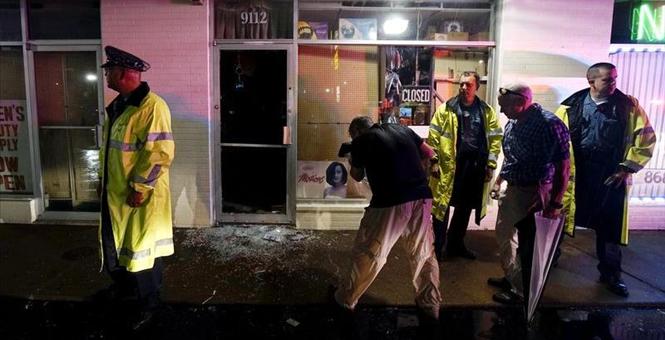'Ferguson Effect' is Real and It Threatens to Harm Black Americans Most
By Michael Barone
TownHall.com
University of Missouri at St. Louis criminologist
Richard Rosenfeld has had "second thoughts." Like
many academic criminologists, he had pooh-poohed
charges that skyrocketing murder rates in many
cities in 2015 and 2016 result from a "Ferguson
effect" -- a skittering back from proactive policing
for fear of accusations of racism like those that
followed the death of Michael Brown in Ferguson,
Missouri, in August 2014.
Now, after looking over 2015 data from 56 large
cities, he's changed his mind. Homicides in those
cities were up 17 percent from 2014. And 10 cities,
all with large black populations, saw homicides up
33 percent on average.
"These aren't flukes or blips, this is a real
increase," Rosenfeld said. "The only explanation
that gets the timing right is a version of the
Ferguson effect."
Rosenfeld thus parts company with the liberal
Brennan Center, whose analysts argued that the 2015
homicide increase in large cities was not a
"national pandemic." He parts company also with
FiveThirtyEight analyst Carl Bialik, who dismissed a
16 percent homicide increase in 59 of the 60 largest
cities in 2014 and 2015 as "a less dire picture than
the one painted by reports in several large media
outlets."
But a 16 or 17 percent increase in homicides in
major cities that account for a large share of the
national murder toll is, in historical perspective,
very dire indeed. The most accurate word is
"unprecedented." The only double-digit increases in
national murder statistics going back to 1960 are 13
percent (in 1968), 11 percent (in 1966, 1967 and
1971) and 10 percent (in 1979).
As anyone familiar with the workings of compound
interest might guess, such increases rapidly added
up. The total number of homicides nationally more
than doubled between 1966 and 1979. The number
peaked in 1991.
During those years, most academic criminologists
argued that high rates of violent crime resulted
from economic distress and -- noting that nearly
half of murders were committed by blacks -- from the
endemic racism in American society. Today the
Brennan Center echoes this analysis: "Economic
deterioration of those cities could be a contributor
to murder increases."
Political scientist James Wilson and maverick
criminologist George Kelling dissented from this
view. In their 1982 Atlantic article "Broken
Windows" they argued that proactive policing and
elimination of signs of disorder (like broken
windows) could sharply reduce crime rates.
In the 1990s New York Mayor Rudy Giuliani and Police
Commissioner Bill Bratton put the "broken windows"
theory into effect. Their proactive policing tactics
were continued by Mayor Michael Bloomberg and widely
imitated and adapted around the country.
The result was that homicides in New York were
reduced from 2,445 in 1990 to 328 in 2014.
Nationally, the number of murders declined 42
percent from 1991 to 2014.
The definitive chronicler of proactive policing, the
Manhattan Institute's Heather Mac Donald,
spotlighted the Ferguson effect in a Wall Street
Journal article in May 2015. She noted that arrests
were sharply down in cities such as St. Louis and
Baltimore because the "incessant drumbeat against
the police" across the country had "officers scale
back on proactive policing under the onslaught of
anti-cop rhetoric."
Those encouraging such rhetoric include President
Obama and his first attorney general, Eric Holder --
even though an intensive Justice Department
investigation of Brown's killing in Ferguson cleared
the officer involved and made clear that charges
that Brown had put up his hands and surrendered were
baseless.
Obama has since said that "there's no data to
support" a Ferguson effect. That puts him at odds
with his appointee FBI Director James Comey, who
says that his conversations with police officials
around the country convinced him there are "marginal
pullbacks by lots and lots of police officers." It
also put Obama at odds with Rosenfeld, who has found
clear evidence of "de-policing" in Baltimore and
Chicago, where homicides have spiked.
The charge of cherry-picking data and misleading
rhetoric can more justifiably be leveled against
administration officials and mainstream media, who,
after the Ferguson killing, created the impression
of a rising epidemic of racist police officers
shooting innocent blacks. The few such cases have
received prompt and stern attention from local law
enforcement.
Black Americans were the primary victims of the huge
crime increase starting in the late 1960s, and they
will be the primary victims again if the Ferguson
effect continues to result in more homicides. Can't
we prevent this awful history from repeating itself?


